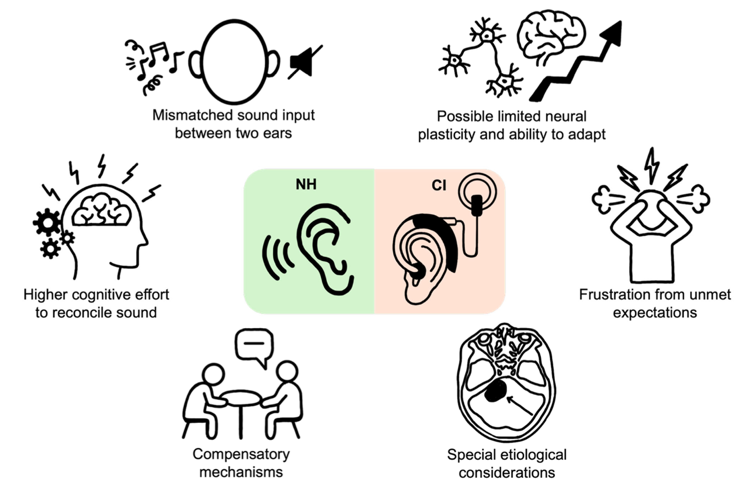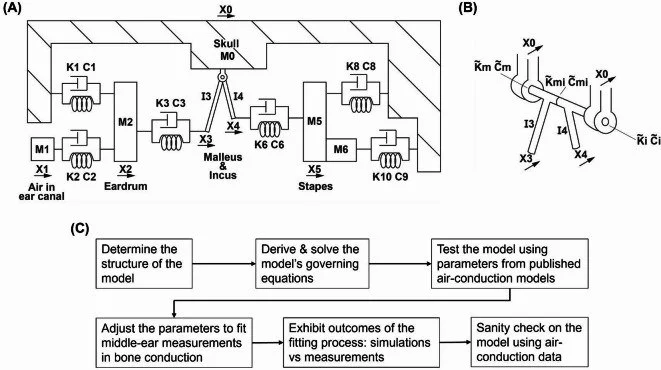By Elliott Kozin, M.D.
A vestibular schwannoma, also known as an acoustic neuroma, is a benign tumor of the cochleovestibular nerve that connects the inner ear to the brainstem. Vestibular schwannomas may result in both hearing and balance symptoms. Surgery for vestibular schwannomas aims to remove the tumor and preserve function of surrounding cranial nerves, including the facial (cranial nerve VII) and cochlear nerves.
In a study led by Lorenz Epprecht, M.D., and Daniel Lee, M.D., at Mass Eye and Ear, we sought a method to better predict the course of the facial nerve to help guide the surgery and reduce potential complications. More specifically, we used an imaging technology called diffusion tensor imaging (DTI), also known as diffusion MRI-based tractography, and 3D-printing techniques to generate 3D maps of the facial nerve.
A 3D-printed vestibular schwannoma with the facial nerve (cranial nerve VII, or CN VII) drawn on it in red.
Our results, published in the journal Otology & Neurotology in June 2021, detail a new, 3D-printed, patient-specific tumor model for quantitatively assessing the accuracy of facial nerve tractography in vestibular schwannoma patients. We compared tractography with the intraoperative 3D course of the facial nerve. Surgeons were blinded to tractography and drew the intraoperative course of the facial nerve on a patient-specific, 3D-printed tumor model for detailed comparisons.
In our cohort, the description of the cranial nerve VII course in relation to vestibular schwannomas was highly reproducible. In 94 percent of tumors with tractography (15 of 16), the intraoperative description of the facial nerve matched the tractography findings.
There were limitations with this approach. The maximum distance between tractography and intraoperative course of the facial nerve was 3.7 mm ± 4.2 mm, which may be clinically significant.
In summary, this study presents a novel approach to facial nerve tractography in patients with vestibular schwannoma. Further research is needed as quantitative measures suggest a clinically significant distance between tractography and the course of the facial nerve.
A 2018 Emerging Research Grants scientist generously funded by the General Grand Chapter Royal Arch Masons International, Elliott Kozin, M.D., is a physician and surgeon at Mass Eye and Ear and assistant professor of otolaryngology–head and neck surgery at Harvard Medical School, both in Boston.









Hearing Health Foundation (HHF) is currently accepting applications for 2026–2027 awards through our Emerging Research Grants program.